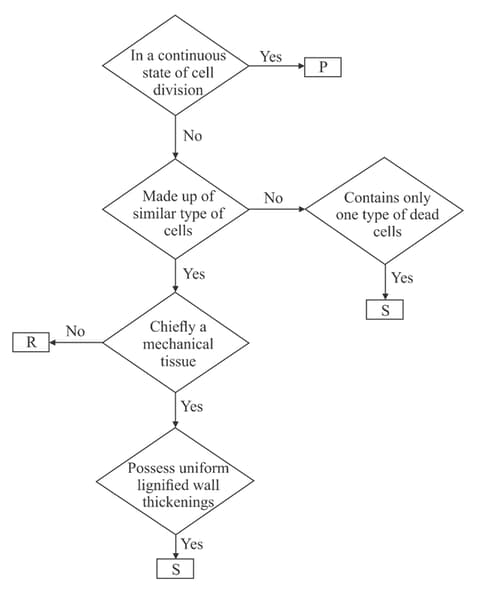Tissue
Tissue: Overview
This topic covers concepts, such as Parenchyma, Connective Tissues, Phloem, Xylem, Meristematic Tissues, Epithelial Tissues, Collenchyma, Sclerenchyma, and Muscular Tissue.
Important Questions on Tissue
Wall of blood capillary is formed of
Study the flow chart given below.

Which of the following statements is incorrect regarding this?
Xylem formed by how many different kinds of elements?
How many of the given statements are true?
A. In sclerenchyma, the cell wall is thickened at corners.
B. Phloem is an example of simple permanent tissue.
C. Protophloem is formed earlier and is with narrow sieve tubes.
Endodermis activity transports ion in one direction because
Where is the control point for minerals, where a plant adjusts the quantity and types of solutes that reach the xylem?
Brush border cuboidal epithelium is found in
Which of the following tissue has free surface?
Which of the following is correct for epithelial tissue?
Select the correct matching.
| A | Tracheids | Elongated and tube-like cells with thick and lignified wall and tapering ends. | |
| B | Vessels | Tube like structure made up of many cells, each cell with lignified wall and large central cavity. | |
| C | Xylem fibre | Highly thickened walls and obliterated central humans. | |
| D | Xylem parenchyma | Living cell with thin cell wall made up of cellulose. |
Xylem is composed of how many different elements?
Which of the following is a function of xylem?
A thick-walled lignified simple mechanical tissue is
The primary plant body is made up of
A simple mechanical tissue devoid of lignin is
In which way collenchyma differs from sclerenchyma?
